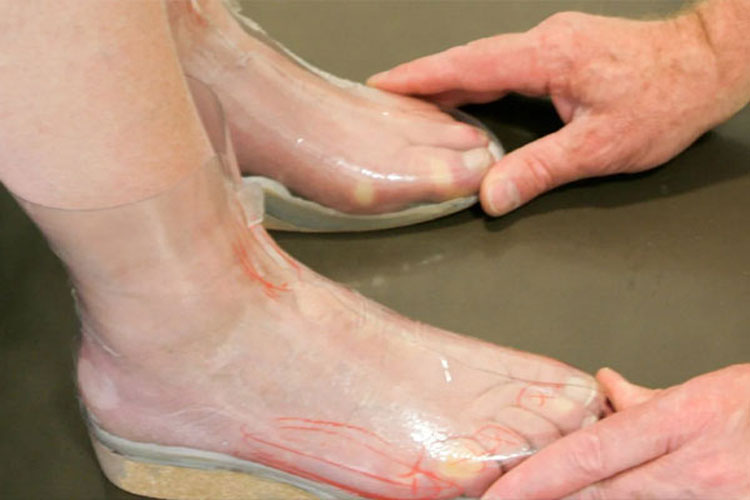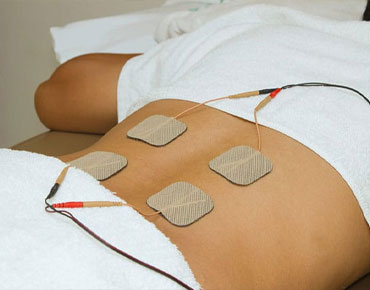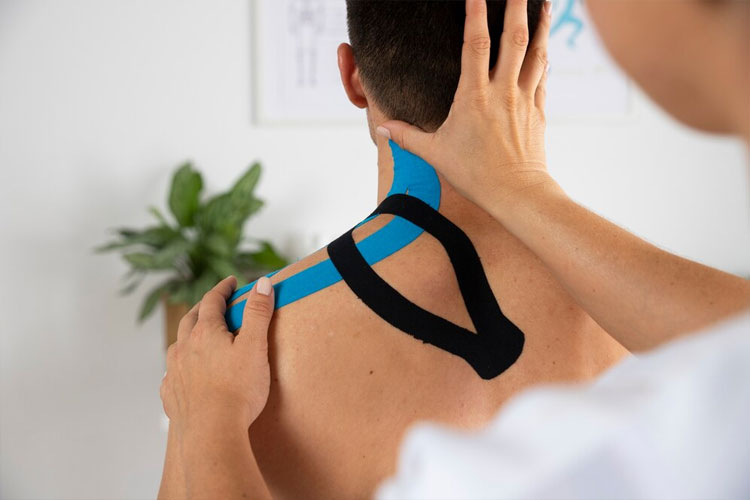
MindBody Physiotherapy & Wellness Clinic
- 107 Hawthorn Way Unit 6, Leduc, AB T9E 0B1
- Mon to Fri 9:00am to 6:00pm
-
Call us anytime
+1 (587) 468-1818
-
Write a mail
info@mindbodyphysio.ca
- Book Appointment
Blog Details
 Fri Feb 16
Fri Feb 16
What is Shockwave Therapy? How does it work?
Are you tired of dealing with chronic pain caused by sports injuries and considering alternative treatments? Look no further than shockwave therapy. This non-invasive approach is gaining popularity as a game-changer for musculoskeletal conditions, offering relief without the need for surgery. But what exactly is shockwave therapy and how can it benefit those suffering from sports injury? Visit our physiotherapy clinic to find out more.
Shockwave therapy is a highly effective treatment for sports injuries. It utilizes acoustic waves to stimulate healing in damaged tissues, making it an essential part of rehabilitation exercises at our physiotherapy clinic. These high-energy pulses promote blood flow and trigger the body's natural repair mechanisms, accelerating recovery from sports injury.
With its impressive success rates and minimal side effects, shockwave therapy has become a go-to treatment option for many individuals seeking pain relief from chronic tendinopathy. Whether you're struggling with tendinitis, plantar fasciitis, or other soft tissue injuries, this innovative therapy can provide significant benefits. By visiting a physiotherapy clinic, you can receive rehabilitation exercises that incorporate pressure waves to help alleviate your symptoms.
So, if you're ready to explore an effective and non-invasive solution to your musculoskeletal woes, let's dive deeper into the world of shockwave therapy in our sports medicine division and discover how it can transform your journey towards recovery. Shockwave therapy is a conservative treatment that utilizes rehabilitation exercises to target injured tissue.
Benefits of Shockwave Therapy for Healing
Accelerates tissue repair and regeneration
Shockwave therapy is a high energy treatment that accelerates the healing process for injury. It promotes tissue repair and regeneration through rehabilitation exercises. The body's natural healing mechanisms can be slow or inefficient, but shockwave therapy helps speed up recovery with ESWT.
By delivering high-energy sound waves to the affected area, shockwave therapy stimulates cellular activity and promotes the production of collagen, a key protein responsible for tissue repair. This increased collagen production helps to speed up the healing process, allowing injured tissues to regenerate at a faster rate. Shockwave therapy is an effective non-invasive treatment option for injury rehabilitation exercises. ESWT, or extracorporeal shockwave therapy, has been proven to be beneficial in promoting tissue repair without the need for invasive treatments.
Reduces pain and inflammation effectively
One of the most significant benefits of shockwave therapy is its ability to effectively reduce pain and inflammation caused by injury. When tissues are damaged or injured, it often leads to discomfort and swelling in the affected area. Traditional treatments may provide temporary relief but fail to address the root cause of these symptoms. With shockwave therapy, patients can experience relief from injury-related pain and inflammation through targeted rehabilitation exercises and ESWT, making it an effective option for sports injuries.
Shockwave therapy, also known as ESWT, is an effective treatment for sports injuries. This therapy targets the source of pain directly, providing immediate relief by disrupting pain signals sent by nerve fibers. Additionally, ESWT triggers an anti-inflammatory response in the body, reducing swelling and inflammation around the injured site.
Enhances blood circulation in the treated area
Another benefit of shockwave therapy (SWT) is its ability to enhance blood circulation in the treated area, which can aid in injury recovery and sports performance. Proper blood flow is crucial for optimal healing as it delivers essential nutrients and oxygen required for tissue repair.
The high-energy sound waves delivered during shockwave therapy stimulate blood vessel formation (angiogenesis) and improve microcirculation within damaged tissues, promoting injury healing. This increased blood flow not only accelerates healing but also helps remove metabolic waste products from the site more efficiently, aiding in sports injury recovery.
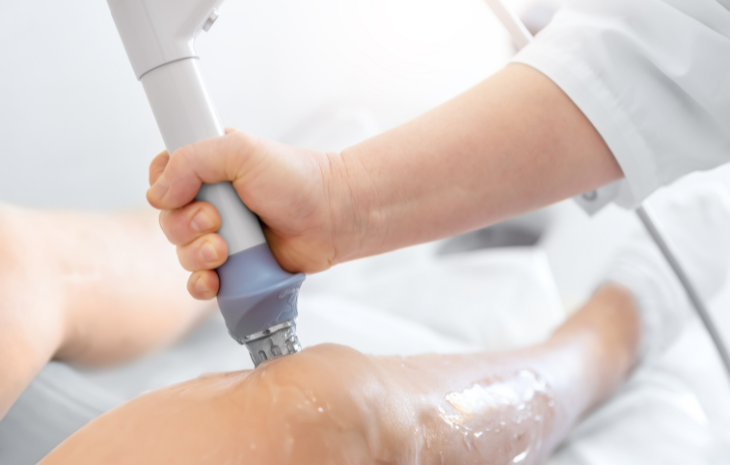
How Shockwave Therapy Works: Mechanism and Application
Generates shockwaves that stimulate cellular activity
Shockwave therapy, also known as SWT, is a revolutionary treatment that utilizes the power of shockwaves to stimulate cellular activity in the body, particularly in the context of sports injuries. These shockwaves are generated by a handheld device and applied directly to the affected area. But how exactly do these shockwaves work in the context of sports?
When physical therapy shockwaves are applied, they create microtrauma at the cellular level. This microtrauma triggers a series of biological responses in the body, leading to increased blood flow and the release of growth factors. As a result, damaged tissues start to regenerate and heal more effectively with therapy treatment.
Imagine your cells as tiny powerhouses that need a boost from swt to kickstart their healing process in sports. Shockwave therapy acts as that much-needed jumpstart, providing them with the energy they require to repair themselves.
Breaks down calcifications and scar tissue formation
Calcifications and scar tissue can often hinder the body's natural healing process in sports, causing pain and limiting mobility. Thankfully, shockwave therapy has been found to be highly effective in breaking down these stubborn formations in sports.
The intense pressure from shockwaves disrupts calcifications, such as calcium deposits or mineral build-ups, allowing for their reabsorption through physical therapy treatment over time. Similarly, scar tissue is broken down into smaller fragments, making it easier for your body's natural processes to remove them with the help of injection therapy.
By eliminating these obstacles within your tissues, shockwave therapy paves the way for faster healing and improved functionality.
Applied directly to the affected area using a handheld device
One of the key advantages of shockwave therapy is its targeted application. The handheld device used by therapists allows precise delivery of shockwaves directly to the affected area.
This localized approach ensures that only specific tissues receive shockwave therapy treatments while minimizing any potential impact on surrounding healthy tissues. By focusing solely on areas requiring intervention, therapists can optimize results while reducing discomfort for patients. Injection therapy and extracorporeal shock wave therapy are effective options for targeted treatment.
Whether you're struggling with chronic pain in your shoulder, knee, or any other part of your body, shockwave therapy can be tailored to suit your needs. The handheld device enables therapists to adjust the intensity and frequency of the shockwaves according to the individual's condition, ensuring a personalized treatment experience.
Indications and Contraindications of Shockwave Therapy: Who Can Benefit?
Effective for chronic tendonitis, plantar fasciitis, and tennis elbow
Shockwave therapy has shown remarkable effectiveness in treating certain conditions like chronic tendonitis, plantar fasciitis, and tennis elbow. Chronic tendonitis refers to the inflammation of a tendon that persists for an extended period. This condition often causes pain and limits mobility, making it difficult for individuals to carry out daily activities. Shockwave therapy can help alleviate the symptoms by promoting blood circulation, stimulating tissue repair, and reducing inflammation in the affected area.
Similarly, plantar fasciitis is a common foot condition characterized by severe heel pain caused by inflammation of the plantar fascia. This condition can make walking or standing unbearable for individuals. Shockwave therapy offers relief by targeting the affected area with high-intensity sound waves that stimulate healing and reduce pain.
Tennis elbow is another condition where shockwave therapy has proven beneficial. It involves inflammation of the tendons on the outside of the elbow due to repetitive motions like gripping or lifting objects. The high-energy sound waves used in shockwave therapy promote tissue regeneration and reduce pain in this area.
Not recommended for pregnant women or individuals with pacemakers
While shockwave therapy can be highly effective for many individuals, there are certain cases where caution should be exercised. Pregnant women are advised against undergoing this treatment as its effects on fetal development are not fully understood. Individuals with pacemakers should avoid shockwave therapy due to potential interference with their devices' functioning.
It is crucial to consult with a healthcare professional before considering shockwave therapy to ensure it is safe and appropriate for your specific situation.
Consultation with a healthcare professional is essential before treatment
Before embarking on any medical treatment, including shockwave therapy, it is vital to consult with a healthcare professional who specializes in this field. They will assess your condition, medical history, and overall health to determine if shockwave therapy is suitable for you. This initial consultation allows the healthcare professional to evaluate potential risks, discuss alternative treatment options, and provide personalized advice based on your unique circumstances.
Remember, seeking professional guidance for shockwave therapy treatments or extracorporeal shockwave therapy is crucial to ensure the most appropriate and effective pressure wave treatment for your specific needs. Self-diagnosis or self-treatment can be risky and may lead to worsening of symptoms or complications.
Combination Therapies: Amplifying the Effects of Shockwave Therapy
Combining shockwave therapy with physiotherapy enhances outcomes
Combining the wave with physiotherapy can greatly enhance the overall outcomes. Physiotherapy focuses on restoring and improving physical function through targeted exercises and manual techniques. By incorporating these two treatment modalities, patients can experience a synergistic effect that accelerates their recovery.
Physiotherapy helps to strengthen and stabilize the affected area, promoting better healing and preventing future injuries. It works hand in hand with shockwave therapy by complementing its effects. While shockwave therapy stimulates tissue regeneration and reduces pain, physiotherapy aids in rebuilding strength and flexibility.
Here are some ways in which combining shockwave therapy with physiotherapy amplifies the treatment's effectiveness:
- Targeted exercise programs: Physiotherapists create customized exercise programs tailored to each patient's needs. These exercises not only promote healing but also help improve range of motion, muscle strength, and balance. When combined with shockwave therapy, these exercises further enhance tissue repair while strengthening the surrounding muscles.
- Manual techniques: Physiotherapists use various manual techniques such as massage, joint mobilization, and stretching to alleviate pain and improve mobility. These techniques work in conjunction with shockwave therapy by reducing muscle tension and increasing blood flow to the affected area. This combination helps optimize the results of both treatments.
Pairing it with exercise programs accelerates recovery further
In addition to physiotherapy, incorporating specific exercise programs into the treatment plan can further accelerate recovery when combined with shockwave therapy. Exercise is crucial for regaining strength, improving flexibility, and preventing re-injury.
By pairing shockwave therapy with exercise programs designed by qualified professionals, patients benefit from:
- Improved circulation: Shockwave therapy increases blood flow to damaged tissues, delivering oxygen-rich blood and essential nutrients. When combined with exercise, this enhanced circulation helps to flush out metabolic waste products, further promoting healing.
- Muscle strengthening: Exercise programs focus on strengthening the muscles surrounding the affected area. This added strength provides better support and stability, reducing the risk of future injuries.
- Enhanced tissue repair: Shockwave therapy stimulates collagen production, which is essential for tissue repair. When paired with targeted exercises, these newly formed tissues can be properly aligned and strengthened through controlled movements.
- Faster recovery: The combination of shockwave therapy and exercise programs accelerates the body's natural healing process, allowing patients to recover faster and return to their daily activities sooner.
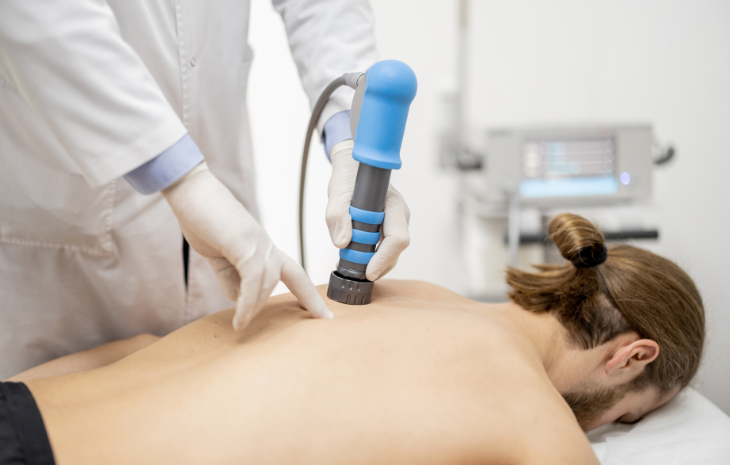
Collaborating with other modalities like laser therapy can yield better results
To amplify the effects of shockwave therapy even further, collaborating with other modalities like laser therapy can yield better results. Laser therapy utilizes focused light energy to stimulate cellular activity and promote tissue regeneration.
When used in conjunction with shockwave therapy, laser therapy offers several benefits:
- Improved pain relief: Both shockwave and laser therapies have analgesic effects that help reduce pain levels.
FAQs
Q: How long does each session of shockwave therapy typically last?
A: The duration of each shockwave therapy treatment session can vary depending on the specific condition being treated. On average, a single shockwave therapy treatment session lasts approximately 10-15 minutes.
Q: Is shockwave therapy painful?
A: While some patients may experience mild discomfort during the shockwave therapy treatment, it is generally well-tolerated. Your healthcare provider will ensure your comfort throughout the session.
Q: How many sessions of shockwave therapy are usually required?
A: The number of sessions needed varies based on factors such as the severity of the condition and individual response to treatment. Typically, a series of 3-6 sessions spaced out over several weeks is recommended.
Q: Are there any side effects of shockwave therapy?
A: Side effects of shockwave therapy treatment are rare, but some individuals may experience temporary skin redness, bruising, or mild soreness in the treated area. These typically resolve on their own within a few days.
Q: Can shockwave therapy be used for chronic conditions?
A: Yes, shockwave therapy has shown promising results in treating chronic conditions such as plantar fasciitis and tendinopathies. It can help alleviate pain and promote tissue healing even in long-standing cases.
Q: Is shockwave therapy covered by insurance?
A: Coverage for shockwave therapy varies depending on the insurance provider and policy. It is advisable to check with your insurance company to determine if it is covered under your plan.
Q: How soon can I expect to see results from shockwave therapy?
Results may vary depending on the individual and the condition being treated with shockwave therapy treatment. Some patients experience relief after just a few sessions of shockwave therapy treatment, while others may require more time for noticeable improvements. Your healthcare provider will guide you through the expected timeline based on your specific situation and the shockwave therapy treatment.
Embracing the Advantages of Shockwave Therapy
In conclusion, shockwave therapy offers numerous benefits for healing various conditions. By utilizing high-energy sound waves, this non-invasive treatment stimulates tissue regeneration and promotes faster recovery. The mechanism and application of shockwave therapy involve targeting specific areas to alleviate pain, reduce inflammation, and enhance blood circulation.
Shockwave therapy is suitable for a wide range of individuals who can benefit from its effects. However, it is important to consider the indications and contraindications before undergoing this treatment. Consulting with a healthcare professional will help determine if shockwave therapy is appropriate for your specific condition.
Combining shockwave therapy with other complementary treatments can amplify its effects and further enhance healing. This approach allows for a holistic approach to recovery by addressing multiple aspects of the underlying issue.
To fully embrace the advantages of shockwave therapy, it is essential to take action. If you are seeking effective pain relief or accelerated healing, consider exploring this innovative treatment option. Speak with your healthcare provider to discuss whether shockwave therapy may be suitable for you.
Remember that while shockwave therapy has shown promising results in various cases, individual experiences may vary. It's always recommended to consult with a qualified professional who can assess your unique situation and provide personalized advice.

